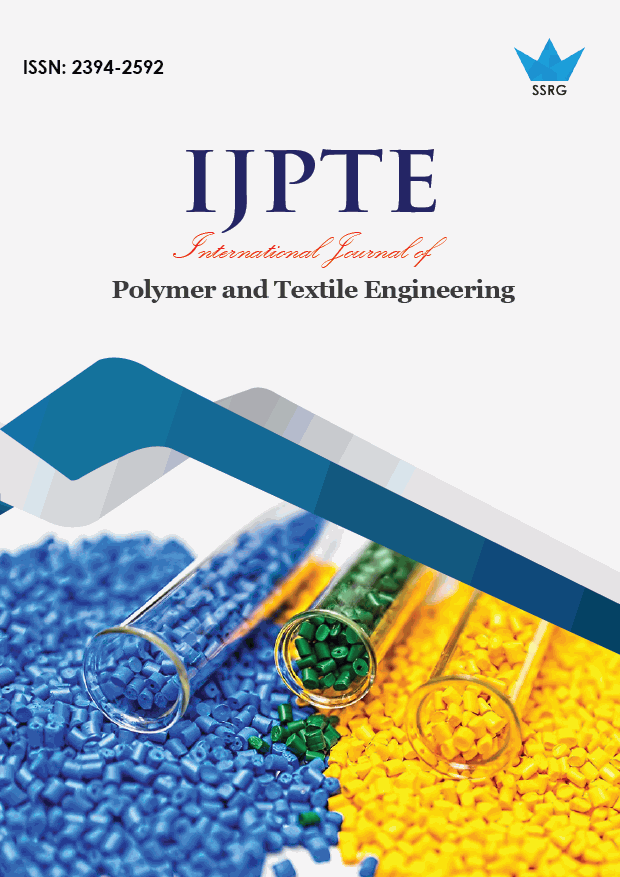Accreditation of Organic Cotton by Spotting Pesticides on Cotton Fiber

| International Journal of Polymer and Textile Engineering |
| © 2018 by SSRG - IJPTE Journal |
| Volume 5 Issue 1 |
| Year of Publication : 2018 |
| Authors : Dr.V.Stephanie, M.Marilyn |
How to Cite?
Dr.V.Stephanie, M.Marilyn, "Accreditation of Organic Cotton by Spotting Pesticides on Cotton Fiber," SSRG International Journal of Polymer and Textile Engineering, vol. 5, no. 1, pp. 1-5, 2018. Crossref, https://doi.org/10.14445/23942592/IJPTE-V5I1P101
Abstract:
This work grants a evaluation of the properties of predictable and organic cotton, using device which are presented at the Faculty of Textile and TUL, an analysis of cotton was made with the raster electron microscope SEM VEGA TS 5130, the physicochemical properties through GC / MS, analytical method of gas chromatography, the mechanical properties of both types of cotton were deliberate in Labor dynamometer test, strength was measured using Pressley Tester instrument answer and fibers on the dynamic mechanical analyzer DMA., cotton maturity was strongminded using a polarizing microscope, using the apparatus Micronaire for fineness, essential length with staple diagram, thermal properties with the discrepancy scanning calorimeter (DSC) and thermos gravimetric analyzer TGA. To perceive the presence of insecticides in samples of cotton, gas chromatography with mass was employed and the results were associated to those obtained from the gas chromatography mass spectrum GC / MS. On the basis of these results it was determined that the gas chromatographic method can be used to detect pesticides in cotton samples and can be applied to all natural fibers of plant origin. In this way, they can be notable as organic and conservative cotton, thus contributing to the certification of organic cotton and substances of vegetable origin. Analysis, which is familiarized in this thesis, exhibits difference in conventional and organic cotton from Senegal, Egypt, Russia and India.
Keywords:
Organic, Conventional, Chromatography, Abundance.
References:
[1] Brushwood, D.E. and Perkins, H.H., Jr., Text. Chem. Color., 26, 32, 2006.
[2] Diop.B Journal renaissance cotonniere, Sodefitex Dakar Senegal No 1, 2008.
[3] Varian, Inc. Printed in U.S.A. 03-914978-00:Rev.42004-2007.
[4] Brushwood, D.E. and Perkins, H.H., Jr., Text. Chem. Color., 26, 32, 2006.
[5] Hebert A.: Le coton fil des temps et des cultures brochure SIA, CIRAD, CIRAD p.2, 02/2006, www.cirad.fr.
[6] Diop.B Journal renaissance cotonniere, Sodefitex Dakar Senegal No 5, 2008.
[7] Note cotonnieredagris-geocotonjanvier fevrier-2008.
[8] Phillip J. Wakelyn, Noelie R. Bertoniere, Alfred Dexter, French Devron Cotton fibers chemistry and technology third edition, Taylor and Francis 2007 International Fiber Science and Technology.
[9] International market for organic cotton and eco textile August 2002.
[10] HLUČEK, J. Livestock manure. Mendel University of Agriculture and Forestry in Brno: Multitexty[online]. 2004.

 10.14445/23942592/IJPTE-V5I1P101
10.14445/23942592/IJPTE-V5I1P101